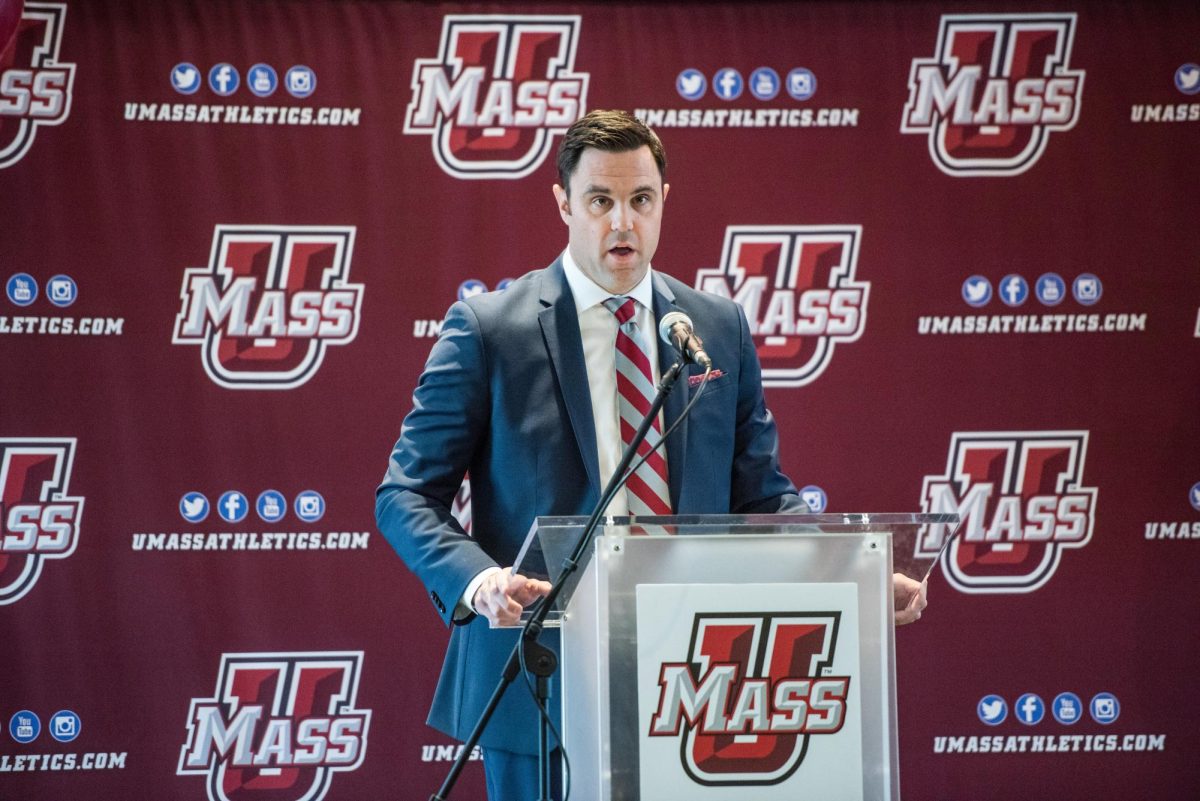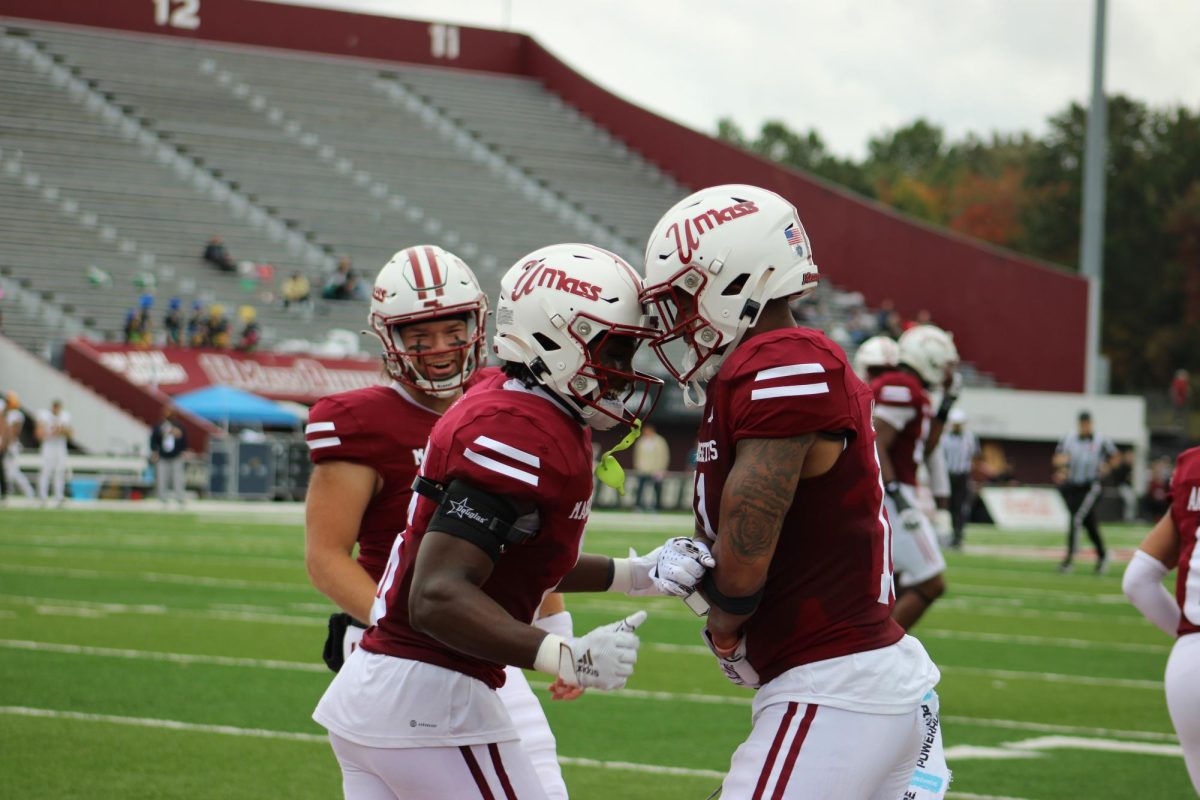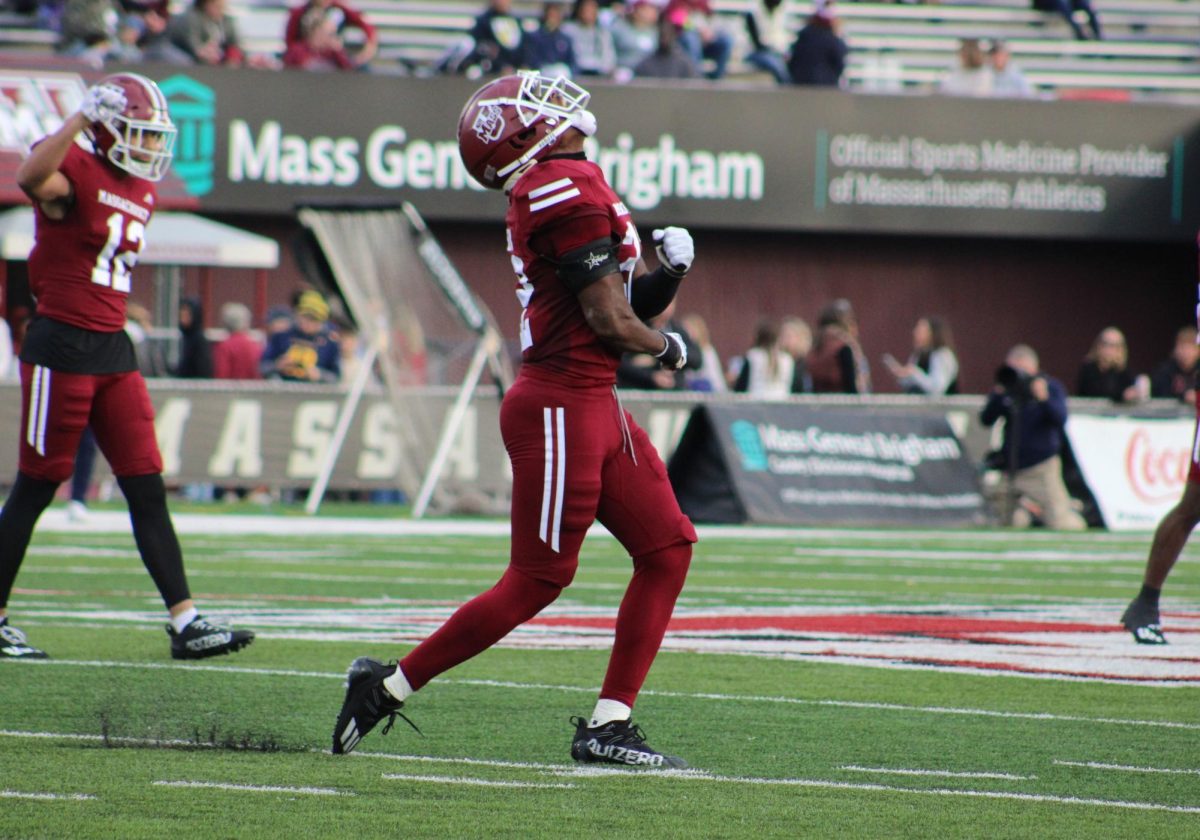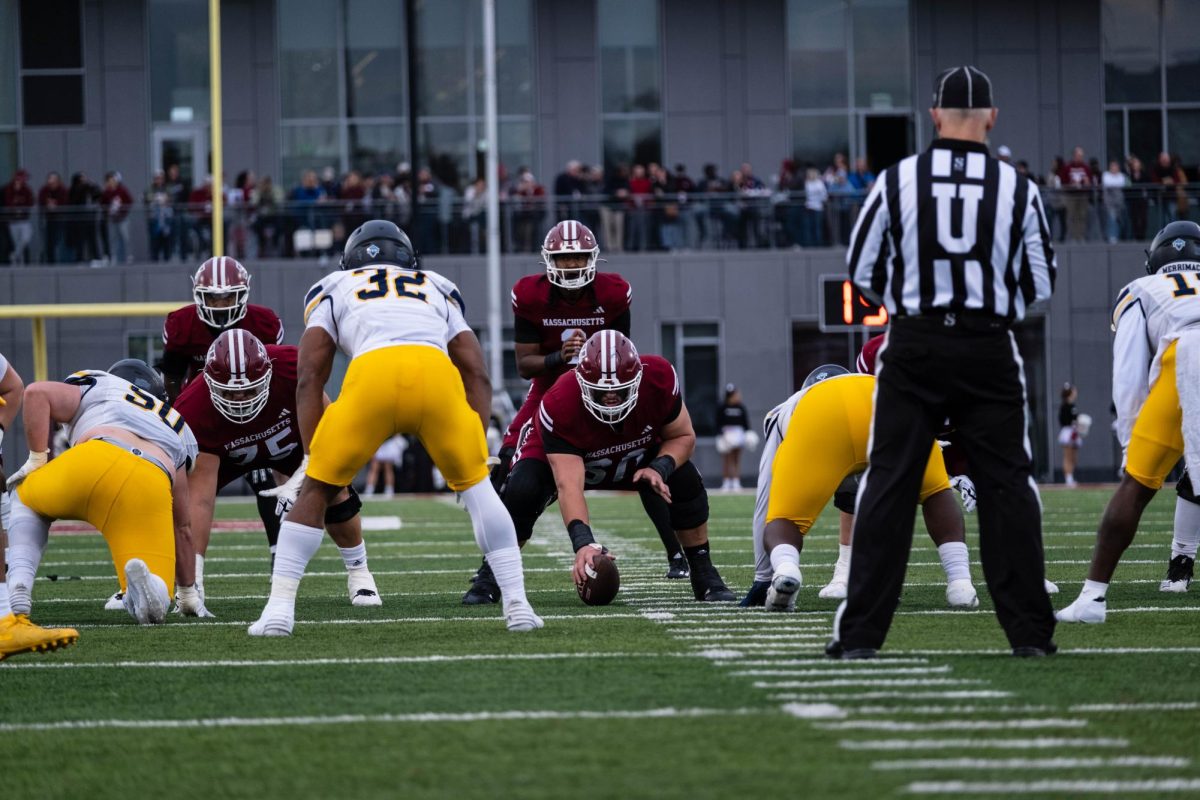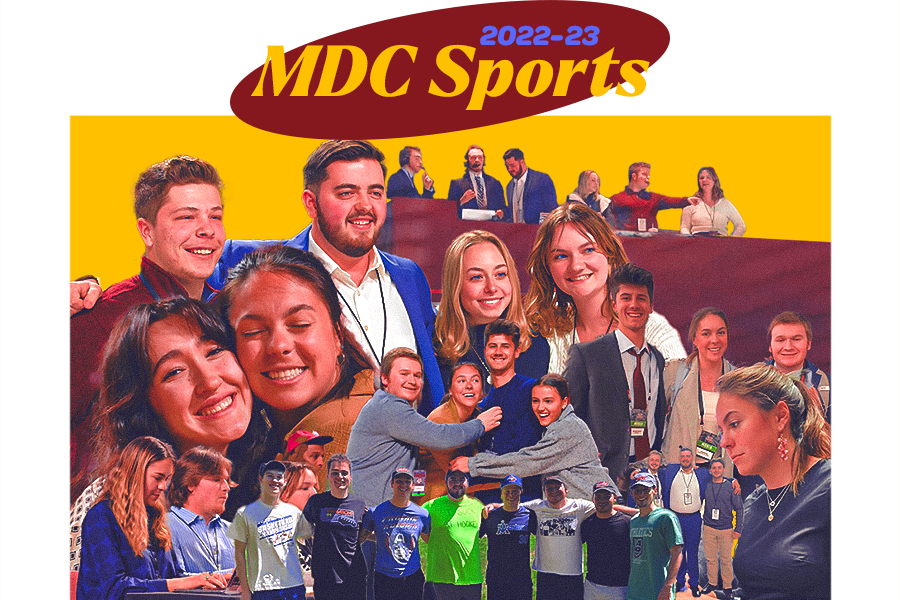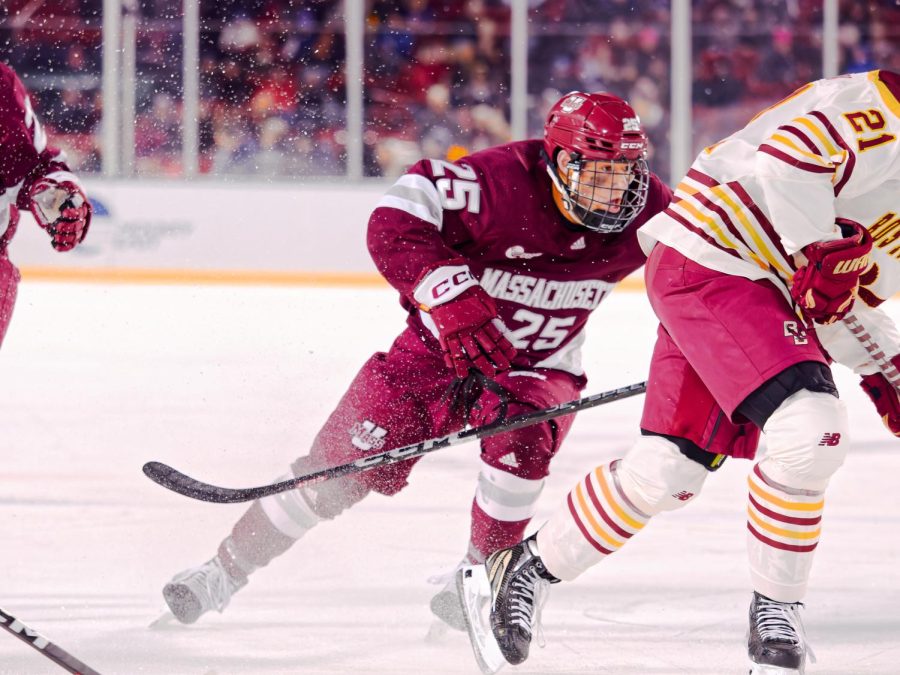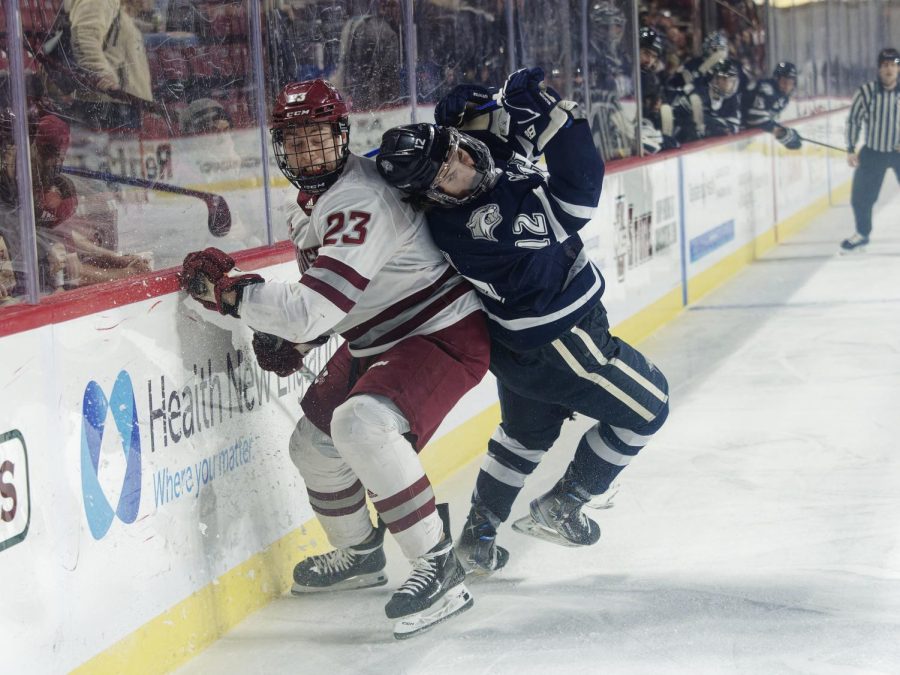
Remember when big-time college athletes were amateurs? Yeah, that was a long time ago.
Technically speaking, college athletics is still a form of amateurism (smile and wave for the NCAA). But who are we kidding? While universities aren’t handing checks to players directly, they’re forcing athletes to cash through any means necessary.
So with this summer’s controversies surrounding big-time programs like Ohio St. and Miami, and UMass football’s looming leap into the Football Bowl Subdivision, it’s as good a time as ever to explore a solution to this clearly broken system.
Remember, Title IX has to be satisfied, which ensures equality between genders. That means any compensation that football players receive, women’s volleyball team must also receive the same.
Recently, various athletic directors and conference commissioners are showing their support for covering “the full cost of attendance” for scholarship athletes. Basically, that includes tuition, room and board, fees, textbooks and personal expenses.
If that sounds similar to what athletes already receive with full scholarships, you’re partly correct. The difference with “full cost of attendance” is the last part: personal expenses.
That would allow programs to pay for their players’ traveling costs, food and other “reasonable” expenses. It would comply with Title IX because every scholarship athlete in the athletic department would receive the same benefits.
But all this system would do is serve as a politically correct form of paying players under the NCAA rules. Reports would surface that these “reasonable” expenses involve cars for travel or big-screen TVs for studying film. It would be a laughable solution.
No, that’s not so much a solution as it is a last-gasp attempt to keep amateurism alive in the NCAA.
So instead of keeping the façade, let’s break it down and adapt to the changing times, all while trying to satisfy Title IX.
College sports, more specifically football and men’s basketball, are big-time businesses. Did you see how much money CBS and Turner Sports spent for the rights to March Madness games from 2011 to 2014? $10.8 billion.
How about merchandise sales? If you think the revenue universities bring in through jersey and memorabilia sales isn’t substantial, you must be the only person on campus without an article of team gear.
From June 2009 to June 2010, Texas was No. 1 on the list of schools which sell the most merchandise as compiled by the Collegiate Licensing Co. The university raked in $10.15 million in gross royalties.
As Jalen Rose said in ESPN’s “30 for 30” Fab Five documentary, “Everything we wore, they [Michigan] were selling.”
So who’s to tell college athletes they shouldn’t see a penny of that revenue? If you think a “free education” is worth what athletes put out on the field or court, you’re mistaken. Say it with me, $10.8 million.
There’s money there. You can’t disagree with that. The problem is how the revenue for schools would be spread around evenly.
One way would be to give a monthly stipend, depending on the total revenue, to all scholarship athletes in the department.
While you may think it’s unfair to share the revenue made by the football program with the women’s soccer program, it doesn’t matter. It’s a moot point because Title IX is in place to protect against any gender discrimination.
The perceived negative for this type of system is the increased gap it will create between big-time programs who have enough money to go around and those fighting to stay competitive. Obviously players will chase the money and pick a Florida over a Central Florida.
But when was that ever not the case?
Athletes almost always pick the most successful schools to play at and this system won’t widen the disparity much more than it already is.
Now, it’s one thing to pay athletes salaries and another to let them seek their own selling opportunities. The former is impractical from a logistical standpoint. The latter, however, is more than possible without conflicting Title IX.
We live in a capitalist nation that pays people for their talents.
If an athlete wants to sell memorabilia for a tattoo, why can’t they? If you don’t bat an eyelash when an art student sells a painting or a theater student scores a Broadway role, you can’t hold down an athlete for selling his own jersey.
Maybe the biggest farce is a video game like “NCAA Football” by EA Sports. You can play as Auburn’s quarterback, who looks eerily similar to former-Tigers signal-caller Cam Newton. The virtual figure has the same height, weight, skin tone and look. The only difference is he’s identified by his number rather than his name.
So while EA Sports is reeling in profits, athletes get nothing, even though you and I and EA Sports know that it’s essentially Newton quarterbacking Auburn in the game.
Pay-for-play isn’t a foolproof scenario. Issues would arise in the system. But we need to stop pretending that the current system isn’t broken and all we have to do is enforce the rules better.
We either embrace the time we live in or continue punishing programs and innocent players for the actions of a few guilty.
It’s your move, NCAA.
Jay Asser can be reached at [email protected].


